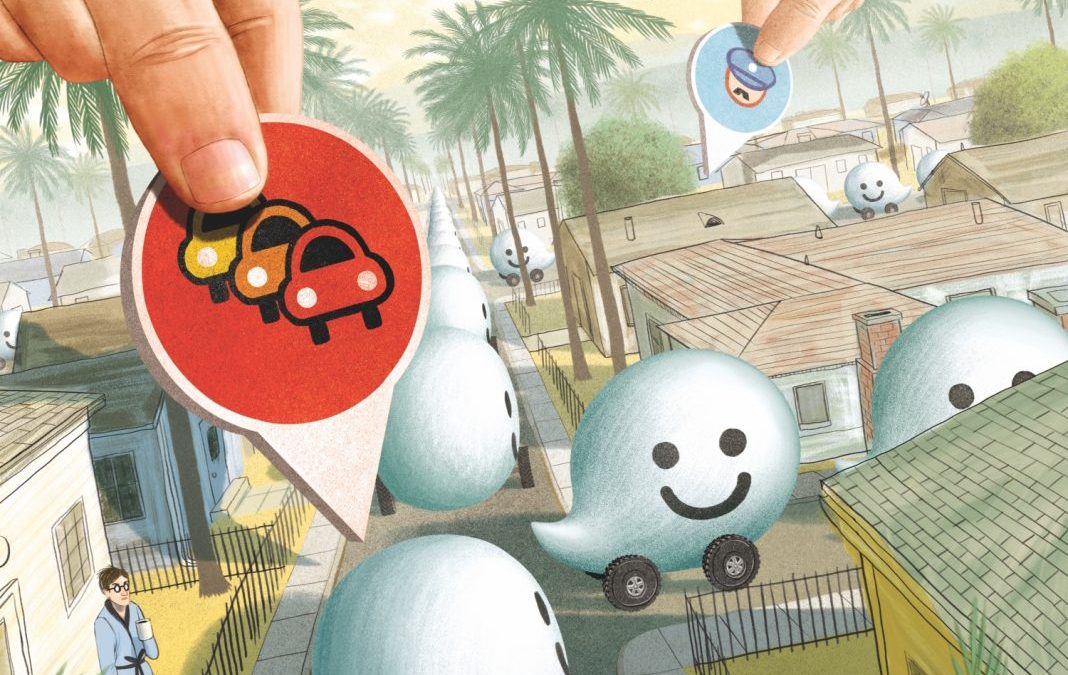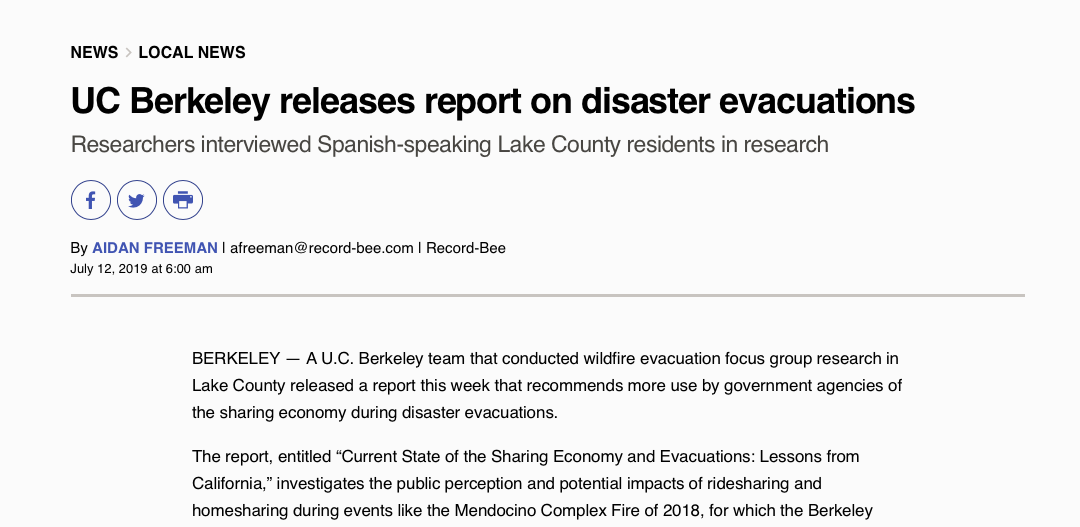
by Innovative Mobility Research | Aug 21, 2019 |
Jonathan Littman August 20, 2019 Level 1 is where you start. The higher echelons of control come only with obsession. You jack in for 45 minutes on your lunch hour. Afternoon coffee break. At night when your spouse imagines you’re cranking away on that office project. They have no idea. But when your fingers brush the keys, out there on the very real streets of Los Angeles, traffic shifts and undulates, like rainwater cutting a path. Homeowners wake up to find themselves trapped in a pop-up freeway hell that makes it nearly impossible to exit their driveways. The transportation officials and the council members and the whining neighborhood associations are mere spectators. The gamers won. The algorithm is God. Technology has spoken, and you know your supporting role. The unheralded superhero in this movie, giving every Angeleno the power to take back the streets. Los Angeles went wild over Waze when it first hit the city in 2011. It was the brash counterpart to the Google and Apple traffic apps that took a more conservative tack to turn-by-turn directions, generally providing two or three traditional highway and thoroughfare routes. Not Waze. One definitive route. The wormhole, the ultimate shortcut, the secret trick to avoid getting screwed on the 405 or the 110. In September 2014 this magazine published “The Surprising Wisdom of Waze,” an ode to what seemed algorithmic serendipity, with honeyed lines like, “To me, Waze is the Voice of God.” Why the adulation? Waze grabbed you—the harried, downtrodden L.A. commuter—with the subjective, hard-to-counter feeling that this crazy route over hill and dale just had to be...

by Innovative Mobility Research | Aug 12, 2019 |
Alana Semuels August 9, 2019 When JUMP’s bright red bikes started appearing on the streets of San Francisco last year, Ian Chesal was relieved. His lengthy commute, from the hills of Oakland to his tech company’s San Francisco office, involved driving to the subway, sitting for 40 minutes, and then walking a mile to his office. Once the JUMP bikes appeared, he could use his phone to unlock one outside his subway stop, and ride it the rest of the way. The electric motor-assisted bikes gave him a push up the hill to his office, and at $2 for a 30-minute ride, they didn’t add significantly to the cost of his commute. But in June, JUMP, which is owned by Uber, suddenly raised its prices, instantly doubling the cost of Chesal’s ride. He stopped using the shared bikes, dusted off an old bike from his garage, and started bringing it on the subway and riding it that last mile to work. “For now I’m back to riding my own bike and happier for it,” says Chesal, 42. UMP’s price increases were part of a larger trend across the sharing economy. On-demand services of all kinds have been significantly subsidized by… Read the full article here: ‘I’m Back to Riding My Own Bike.’ Higher Prices Threaten Silicon Valley’s Mobility...

by Innovative Mobility Research | Jul 18, 2019 |
Vulog July 18, 2019 Congratulations to Susan Shaheen, who was featured as one of Vulog’s Top 19 of 2019 Influential Women in Mobility. Vulog has released a publication featuring profiles of leading women in the mobility sector worldwide who “truly embody the notion of transforming ideas to impact.” Download the report here: Top 19 of 2019 Influential Women in...

by Innovative Mobility Research | Jul 15, 2019 |
Aidan Freeman July 12, 2019 A U.C. Berkeley team that conducted wildfire evacuation focus group research in Lake County released a report this week that recommends more use by government agencies of the sharing economy during disaster evacuations. The report, entitled “Current State of the Sharing Economy and Evacuations: Lessons from California,” investigates the public perception and potential impacts of ridesharing and homesharing during events like the Mendocino Complex Fire of 2018, for which the Berkeley team hosted a Spanish-speaking focus group to study that demographic’s stance on sharing homes or vehicles during emergencies. The Berkeley study’s primary authors, Stephen Wong and Susan Shaheen, write that “In many evacuations including wildfire evacuations, public agencies often do not have enough resources to evacuate and shelter all citizens.” “Consequently,” they continue, “we propose that the sharing economy, through private companies and/or private citizens, could be leveraged in disasters for transportation and sheltering resources.” The need for more efficient means of transport during and emergency evacuation was made horrifically clear during the Camp Fire in November when thousands of Paradise residents attempted to flee the approaching fire at once along just a few viable exit routes, resulting in congestion and many casualties. In Lake County, roughly 19,000 residents were evacuated during the Mendocino Complex Fire last year. But in rural counties like Lake, Wong noted in an interview, the sharing economy manifests differently than it does in urban areas. Tech-based ridesharing companies like Uber and Lyft are hardly present in Lake County at all, and while homeshares through Airbnb are present here, most of the subjects in the Berkeley focus group were...

by Innovative Mobility Research | Jul 8, 2019 |
Sam Mire June 30, 2019 Flying cars…crash-proof motorbikes…squirrel chauffers. OK, maybe I’m getting a bit carried away with my personal vision for the future of transportation. But a man can dream, can’t he? For a more realistic vision of the future of transportation, here are some industry insiders kind enough to share their (significantly more trustworthy) insights… Read the full article here: What’s The Future Of Transportation? 16 Experts Share Their...






